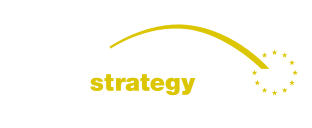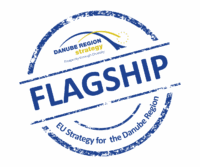Process, platform, ongoing since 2013
EUSDR Priority Area(s): PA 1a Waterways Mobility, PA 11 Security
Submitted by: PA 1a
The joint EUSDR PA 1a & EUSDR PA 11 Working Group on “Administrative Processes” started its work in 2013 and is since then fully dedicated to facilitate and improve control processes in inland navigation, benefitting both the shipping sector (as united in PA 1a) and control authorities (as united in PA 11). Within the broad field of administrative processes, border controls have always been a main source of delays and additional costs for inland waterway transport on the multinational Danube River, which are therefore addressed with priority. In order to ensure the freedom of movement of persons and goods as foreseen in the EU treaties, simple and time-efficient control processes need to be in place at all Schengen external borders and outside the Schengen area.
The activities of the Working Group are based on a joint effort of Priority Area 1a of the EUSDR which is concerned with further developing inland waterways and Priority Area 11, which aims at enhancing transnational cooperation to improve security and to tackle serious and organised crime.
Objectives
The Working Group is a platform uniting (border) control authorities and stakeholders from the shipping industry alike, tackling the reduction of administrative barriers in inland navigation in the Danube Region in an ongoing process.
Need and (expected) impact
The initiative is necessary because control procedures, especially border controls, are a source of delays, in-transparency and unpredictability, hindering the efficient movement of traffic on the Danube. By harmonising, simplifying and finally digitalising such control processes, the administrative burden on transport operators is reduced and simplified for the control authorities, while becoming more predictable.
SIMPLIFICATION: The Practical Manual on Border Controls has been developed to simplify information on a myriad of control forms and processes applicable at and outside Schengen external borders along the Danube. The manual is the first and only one of its kind improving transparency of border controls and reducing market entry barriers for the waterway transportation industry along the Danube. It is publicly and free-of-charge available to waterway users irrespective of their nationality. The manual is being updated on a regular basis.
HARMONISATION & DIGITALISATION: Based on the efforts of the working group, the so-called DAVID-forms have been developed and officially introduced at all border control points at and outside Schengen external borders in Hungary, Croatia, Serbia, Bulgaria, Romania, the Republic of Moldova and Ukraine. They harmonise the data fields of three most often used border control forms (arrival and departure forms, crew lists and passenger lists). Even Slovakia has introduced the forms, although not in the context of border controls but rather port operations. The Working Group is continuing its effort and currently works on the digitalisation of these forms to further reduce the administrative burden.
Recent efforts are also dedicated towards the set-up of a trans-national electronic registration tool (TERM), which enables waterway users to schedule time slots for border controls in a harmonised manner in the countries Hungary, Croatia, Serbia, Bulgaria, Romania, the Republic of Moldova and Ukraine. This will lead to improved plannability and efficiency of border control times for both, the shipping sector and border control authorities alike in all countries at and outside Schengen external borders (as mentioned above).
Furthermore, the use of the transnational control database (IBISWEB) along the Danube is being tackled in order to avoid multiple inspections of vessels and to effectively support the control work of the authorities in a harmonised procedure.
With status June 2022, active users include those control authorities in inland navigation of the EUSDR that are members of Aquapol: Romania, Bulgaria, Hungary, Croatia, Germany – along the Danube (Czech Republic – Labe / Elbe).
Control authorities in Austria and Ukraine have observer status in 2022 with an imminent full membership in 2023 (due to the Russian invasion, Ukraine’s observer status will be implemented in consultation with Ukraine until further notice).
Macro-regional dimension
Countries involved in the Working Group: Germany (as EUSDR PA 11 PAC), Austria (as EUSDR PA 1a PAC) and all countries at and outside Schengen external borders: Hungary, Croatia, Serbia, Romania (in addition to being outside the Schengen area, Romania is PA 1a PAC), Bulgaria (in addition to being outside the Schengen area, Bulgaria is PA 11 PAC), the Republic of Moldova and Ukraine. Slovakia is also involved, however to a lesser degree, as it has no Schengen external borders.
All countries contribute to the outcomes of the Working Group and have taken national steps for the simplification, harmonisation and digitalisation of border control processes.
Stakeholders involved
The Working Group is formed by stakeholders from the national Ministries of Transport and underlying authorities (port authorities, naval agencies), as well as from the Ministries of Interior and experts from the national border control authorities, including: customs and border police. The countries involved are listed under “macro-regional dimension”.
Budget and Funding
As the national efforts to implement the activities of the joint Working Group cannot be monitored, no estimation can be given. It would be possible to implement parts of the Working Group’s activities as own projects with different funding sources, possibly Danube Region Programme.
Further information
https://navigation.danube-region.eu/working-groups/wg-6-administrative-processes/
Contact



